Dry Needling has become increasingly popular among healthcare practitioners in the treatment of musculoskeletal and neuromuscular pain. Now you may be thinking to yourself, “Isn’t that just the same thing as acupuncture?” And the answer is: they are completely different treatment techniques! Acupuncture is derived from the laws of Traditional Chinese Medicine, which are that of Yin-Yang, Qi and Meridian lines. Dry Needling is based in modern Western Medicine which looks at specific body systems, soft tissue, neurologic tissue, and pathology (3). Keep reading for more information on how dry needling works and is used to decrease pain and improve performance.
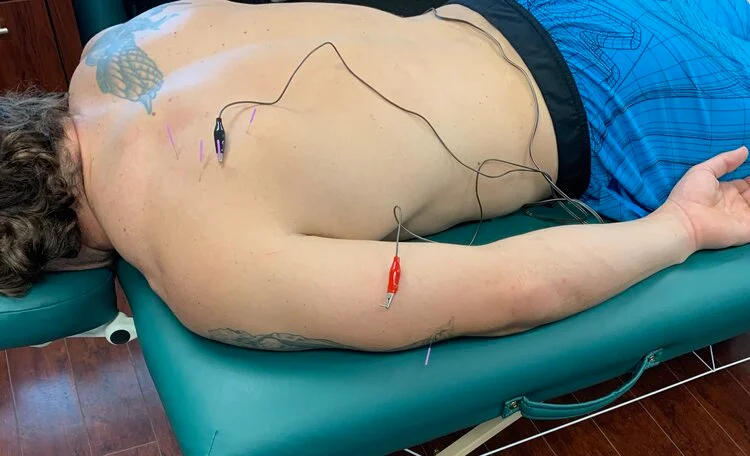
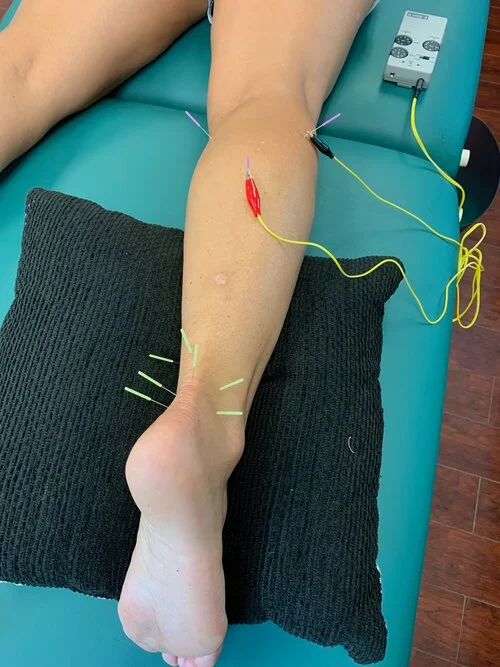
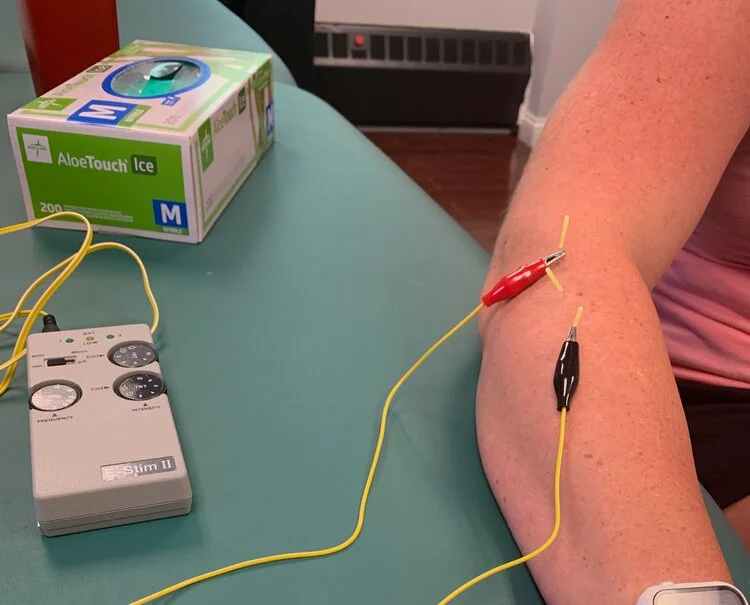
Needle Size
Dry Needling works to increase new blood flow to local muscle tissue via tiny lesions produced by the needle. The sterile, monofilament needles are quite small, and typically range from 0.12 mm – 0.30 mm in width and 15 mm – 75 mm in length depending on the site of application.
Once the needle is inserted, various techniques are utilized to produce controlled and active blood flow to the site. It is common for the muscle to “twitch” or “spasm” during these techniques and is known as a “Local Twitch Response” (3). It is controversial if this twitch is necessary for pain relief (5). Some argue that the twitch releases muscle trigger points and relieves pain, while others have found that the disruption of soft tissue by the needle may be the primary mechanism of pain relief (5,6).
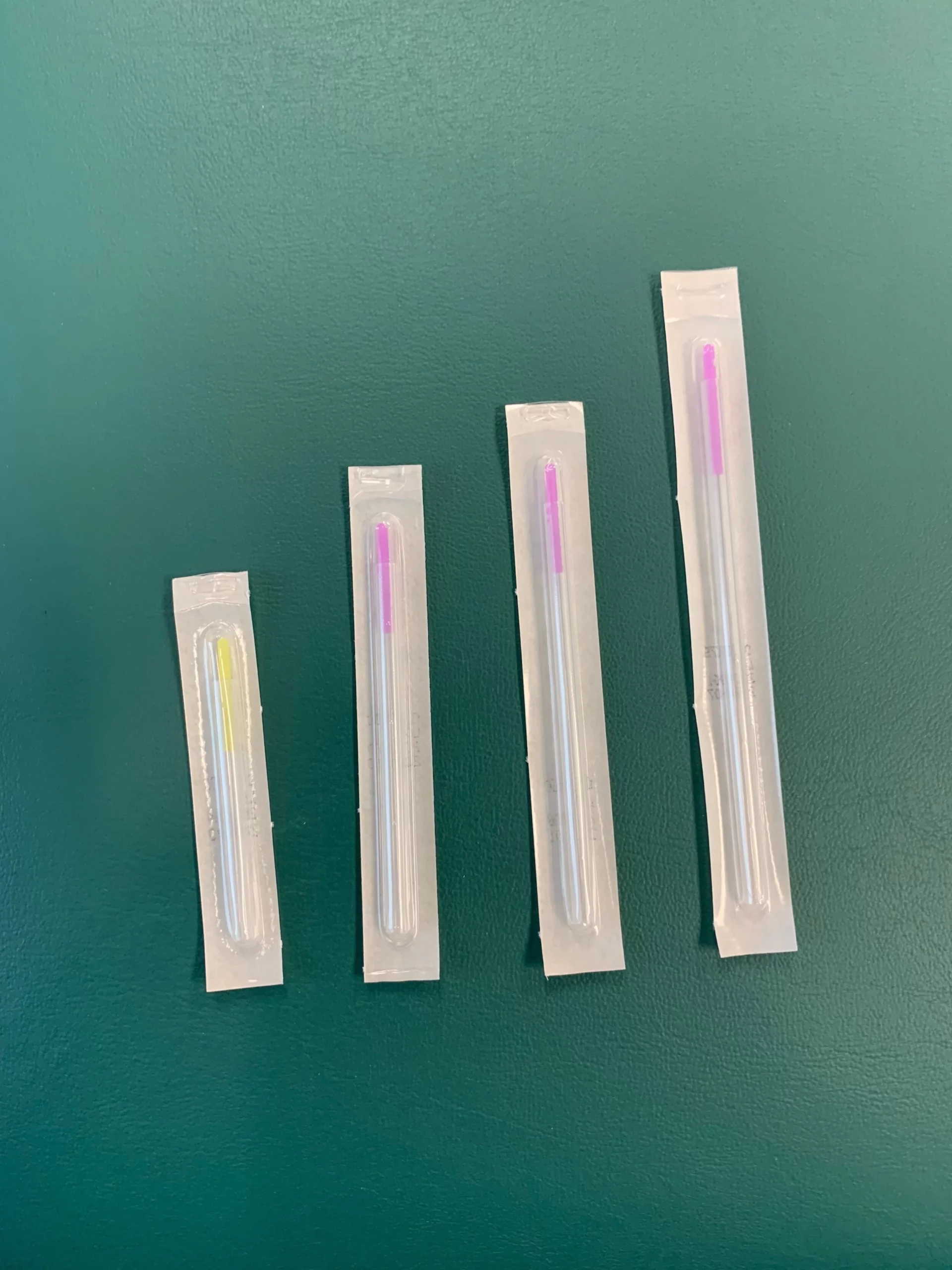
Electrical Stimulation
The application of Electrical Stimulation or E-Stim is also used in conjunction with dry needling. E-stim is typically applied via a topical adhesive pad connected to electrodes that modulate pain. During dry needling, however, the electrodes are directly connected to the handles or shafts of the inserted needles. Thus, the muscle or tendon is supplied with an electric current and a “pulse” is observed and felt.
It is important to consider with any medical treatment the adverse effects. According to an International Journal of Sports Physical Therapy study of 20,494 dry needling treatments, minor adverse events of bleeding (16.04%), bruising (7.71%) and pain (5.93%) were the most common (1). All other minor events made up <3% of the treatments. Major adverse events such as: prolonged symptoms, fainting, forgotten needles, flu-like symptoms, infection, excessive bleeding, lower limb weakness and numbness made up only <0.1% of treatments. Pneumothorax is another consideration when needling near the lungs, which practitioners take great care to avoid vital organs by angling the needle and decreasing needle length. Overall, risk of major adverse events of dry needling are rare and minor adverse events typically resolve quickly (1).
Studies in recent years have shown that Dry Needling is effective at decreasing pain in the short term (2,4). By utilizing this intervention with other active rehabilitative techniques, active humans and athletes can move better more quickly. Painful movement patterns can be corrected in a timely manner to get the individual back to performing at a high level in sport and in life.
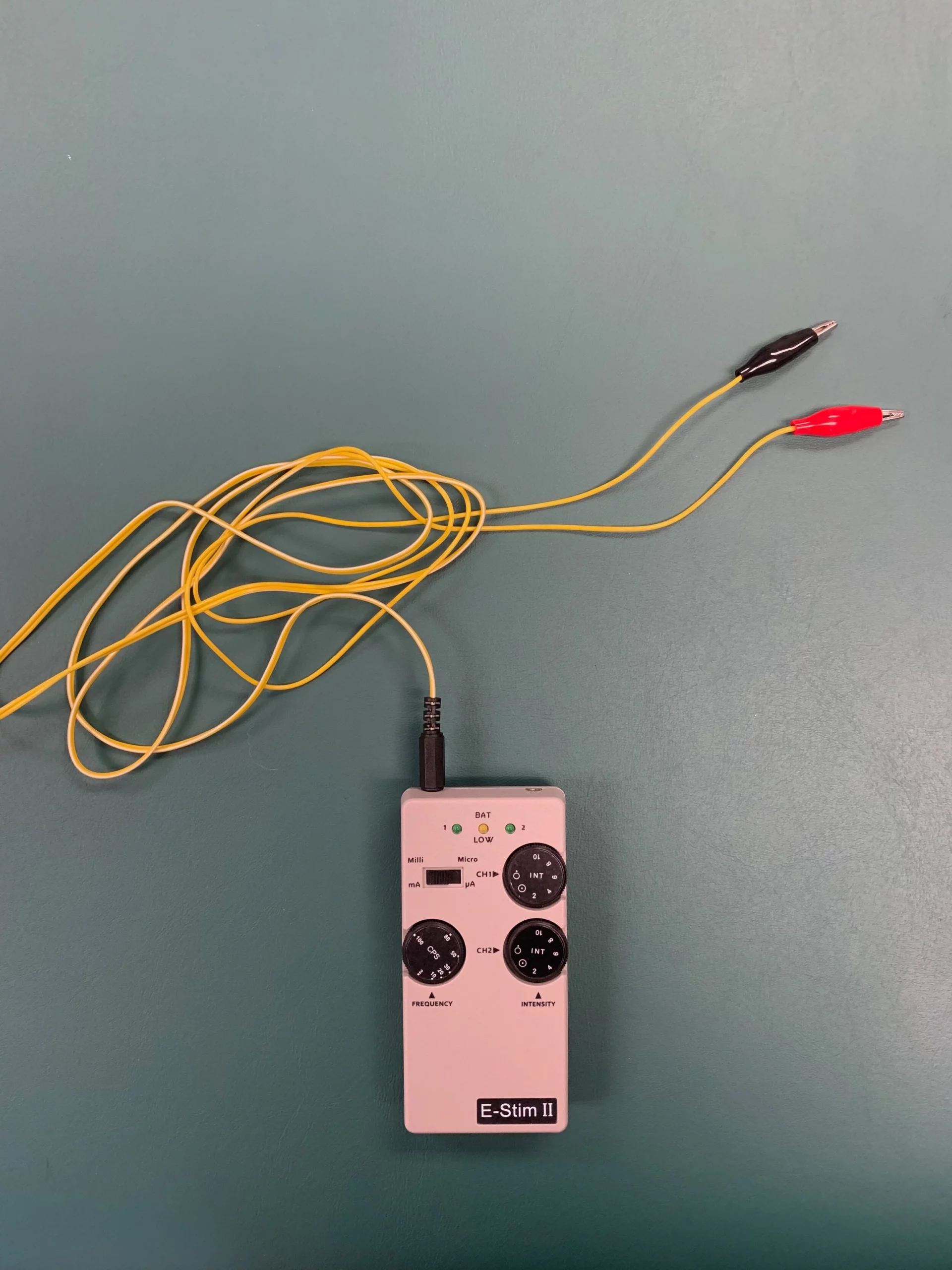
If you are interested in Dry Needling or want more information of other ways Vital Force Physio can help you Outperform Your Pain, contact us via email: drvranic@vitalforcephysio.com or phone: (513) 716-5105 for a free 15 minute consultation.
Movement is Vital for a healthy body and Your Body is a Force to be reckoned with,
Dr. Bryan Vranic, PT, DPT, CSCS
This information is not intended to be used as medical advice but for educational purposes only. Please consult your Physical Therapist, Physician or Healthcare Provider for more information.
References
1. Boyce, D., Wempe, H., Campbell, C., Fuehne, S., Zylstra, E., Smith, G., Wingard, C., & Jones, R. (2020). ADVERSE EVENTS ASSOCIATED WITH THERAPEUTIC DRY NEEDLING. International journal of sports physical therapy, 15(1), 103–113.
2. Kietrys DM, Palombaro KM, Azzaretto E, Hubler R, Schaller B, Schlussel JM, Tucker M. Effectiveness of dry needling for upper-quarter myofascial pain: a systematic review and meta-analysis. J Orthop Sports Phys Ther. 2013 Sep;43(9):620-34. doi: 10.2519/jospt.2013.4668. PMID: 23756457.
3. Ma YT. Dr. Ma’s Integrative Dry Needling: Pain Management and Sports Rehabilitation. (IDN Foundation Course Textbook)
4. Morihisa, R., Eskew, J., McNamara, A., & Young, J. (2016). DRY NEEDLING IN SUBJECTS WITH MUSCULAR TRIGGER POINTS IN THE LOWER QUARTER: A SYSTEMATIC REVIEW. International journal of sports physical therapy, 11(1), 1–14.
5. Perreault T, Dunning J, Butts R. The local twitch response during trigger point dry needling: Is it necessary for successful outcomes? J Bodyw Mov Ther. 2017 Oct;21(4):940-947. doi: 10.1016/j.jbmt.2017.03.008. Epub 2017 Mar 7. PMID: 29037652.
6. Tekin, L., Akarsu, S., Durmuş, O. et al. The effect of dry needling in the treatment of myofascial pain syndrome: a randomized double-blinded placebo-controlled trial. Clin Rheumatol 32, 309–315 (2013). https://doi.org/10.1007/s10067-012-2112-3


